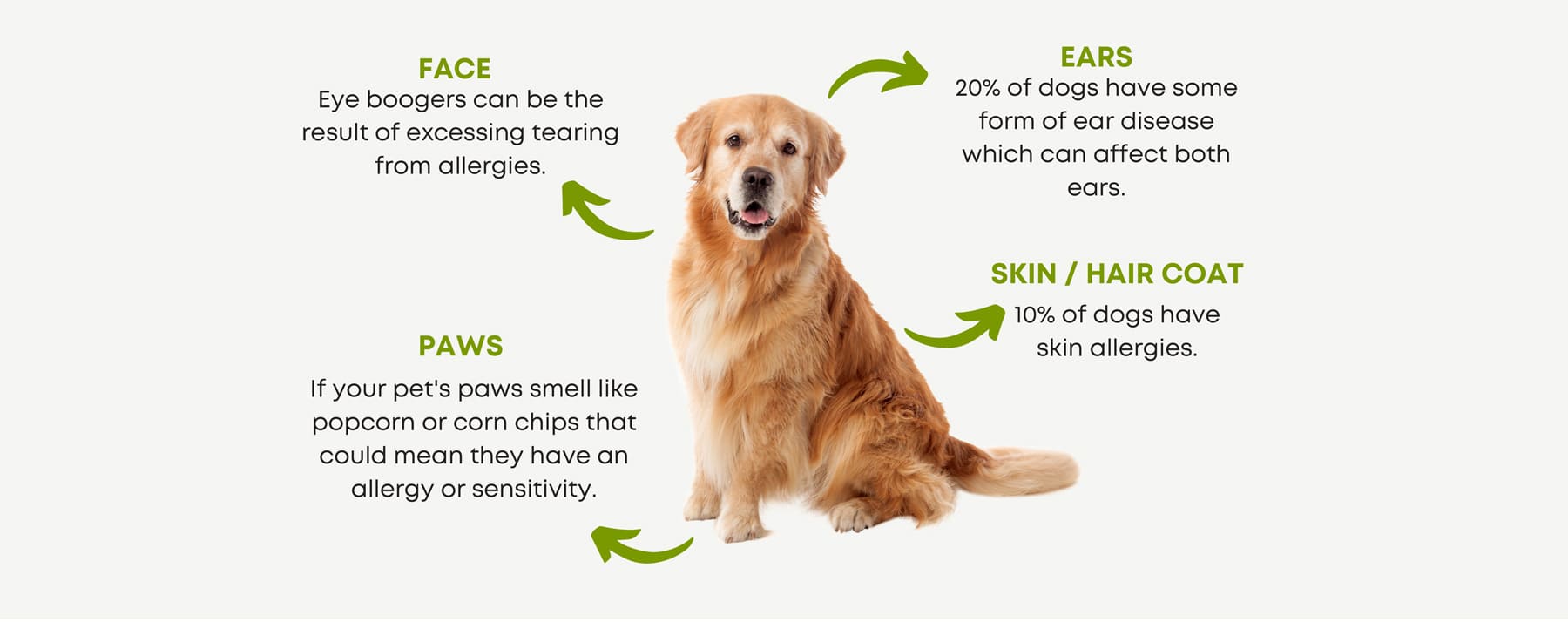Shop Now - Curbside Pickup


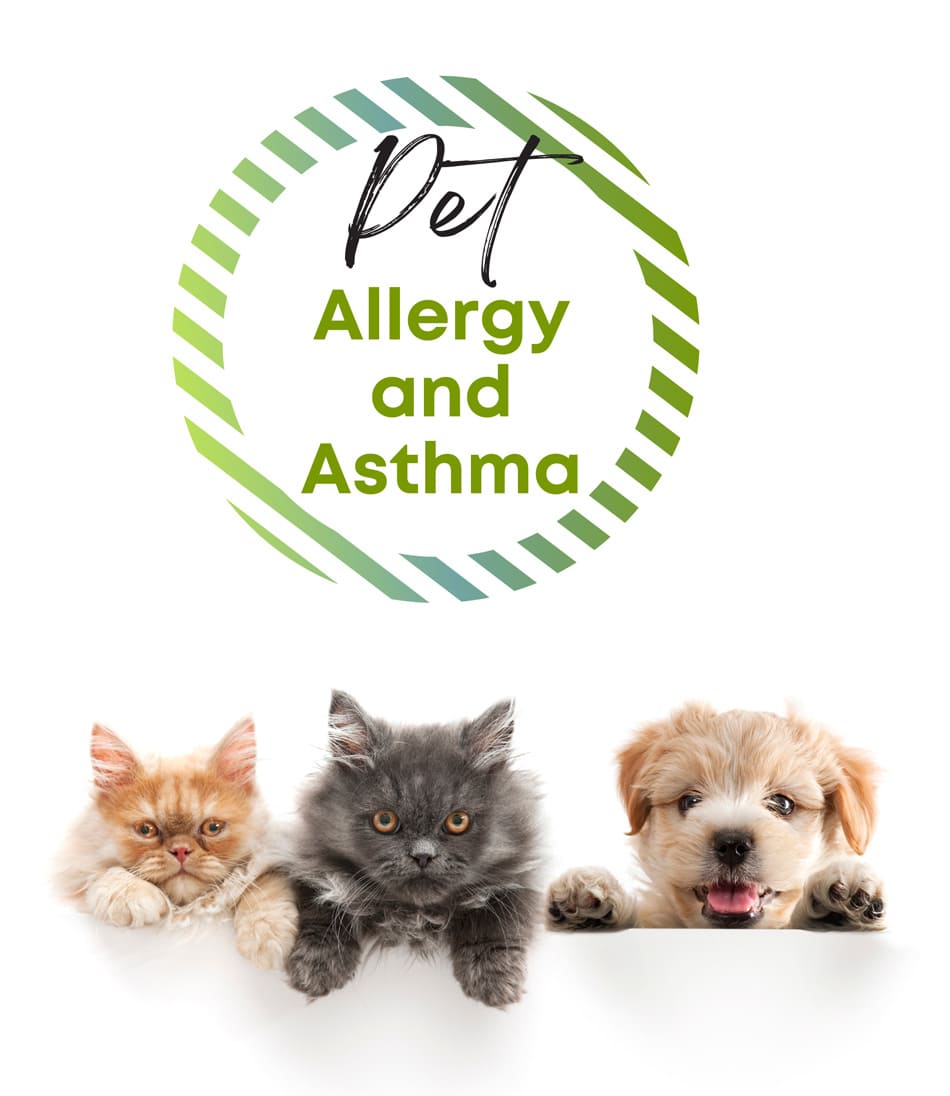
I
dentifying pet food allergies can be challenging. Symptoms can often mimic seasonal allergies,
making it difficult to pinpoint the exact cause of your pet’s discomfort. Since pets can’t verbalize their feelings, recognizing their distress requires careful observation.
Pet Allergy and Asthma Awareness Month: May is the perfect time to learn about common seasonal allergy symptoms in cats and dogs. By recognizing these signs, you can quickly identify potential issues and differentiate between seasonal allergies and food allergies.
Accurate diagnosis is crucial for your pet’s well-being. By understanding the signs and symptoms of both food and seasonal allergies, you can ensure your furry friend receives the correct treatment and thrives.

Diagnosing pet allergies can be a challenge. Common symptoms include excessive itching, skin redness and inflammation, digestive issues like nausea and diarrhea, frequent ear infections, eye problems such as redness and discharge, and loss of appetite. Any of these signs could indicate an underlying allergy in your pet.
Both seasonal allergies (triggered by pollen, mold, and other environmental factors) and food allergies can occur in pets, and unfortunately, their symptoms often overlap. This can make it challenging to determine the exact cause of your pet’s discomfort.
Due to the wide range of potential triggers, a process of elimination is often the best approach to diagnosing pet allergies. Since avoiding outdoor exposure completely is impractical, it’s wise to start by investigating food sensitivities.



Food Intolerance:
Vomiting and/or diarrhea
Food Allergy:
Itchy skin, diarrhea and/or gas
Switch to a grain-free formula with a unique protein like duck, rabbit or venison. Many believe that it’s not appropriate to switch your pet’s food, but we’re here to assure you that Rotational Feeding (switching out what protein you feed a few times a year) can help reduce the risk of food allergies.


When we then feed our pets the same food, we risk overexposing or underexposing them as well which can lead to allergies, inflammation and digestive issues. Food allergies can exist in pets when they eat the same food for years and don’t experience a variety of foods.
Learn more about Mixology® Rotational Pet Feeding and how this can directly
affect, and improve any food allergies your pet may have.
Stop by at your local store to talk to our knowledgeable staff who can help you make a smooth transition and ease your dog or cat’s food triggers.

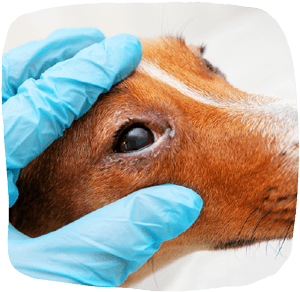
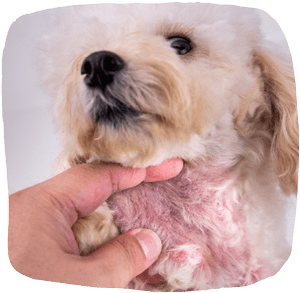
The allergy season for dogs and cats is typically in the spring and summer months. These seasonal allergies arise because plants are blooming during this time of the year, which causes the pollen count to be high.
Common allergens for dogs and cats include fleas, pollen, plants, house dust mites, and ragweed. Ragweed is one of the most common allergens in the U.S. and can be one of the leading causes of your cat’s or dog’s allergy symptoms.


While changing your pet’s diet will help build up their immune system and strengthen their gastrointestinal tract, it can’t protect them from seasonal, outdoor allergies. This is where a probiotic comes into play. When we visit the doctor with a digestive or upset stomach or a weak immune system, doctors recommend a probiotic — the same rules apply to our pets.
Probiotics are designed to strengthen the immune system, control yeast and candida, improve digestion and reduce inflammation of the skin. They contain healthy bacteria that can survive within the stomach and intestines to correct imbalances. Probiotics also feed healthy bacteria growth and regulate bowel movements and enzymes that reduce inflammation.
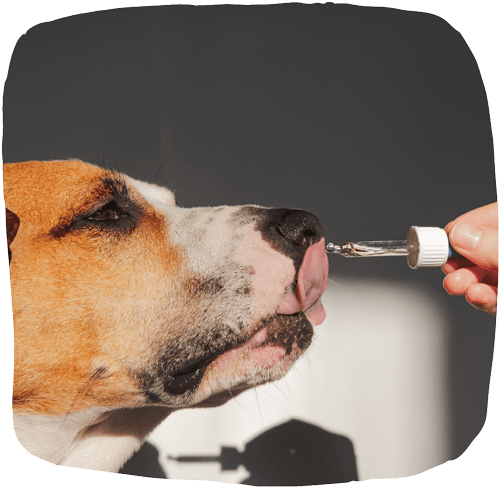
Learn more about our line of Herbsmith Supplements to help soothe your pet and keep them comfortable during seasonal allergy season. Then stop by your local store to stock up on the supplements they need to thrive during the Spring and Summer months.
